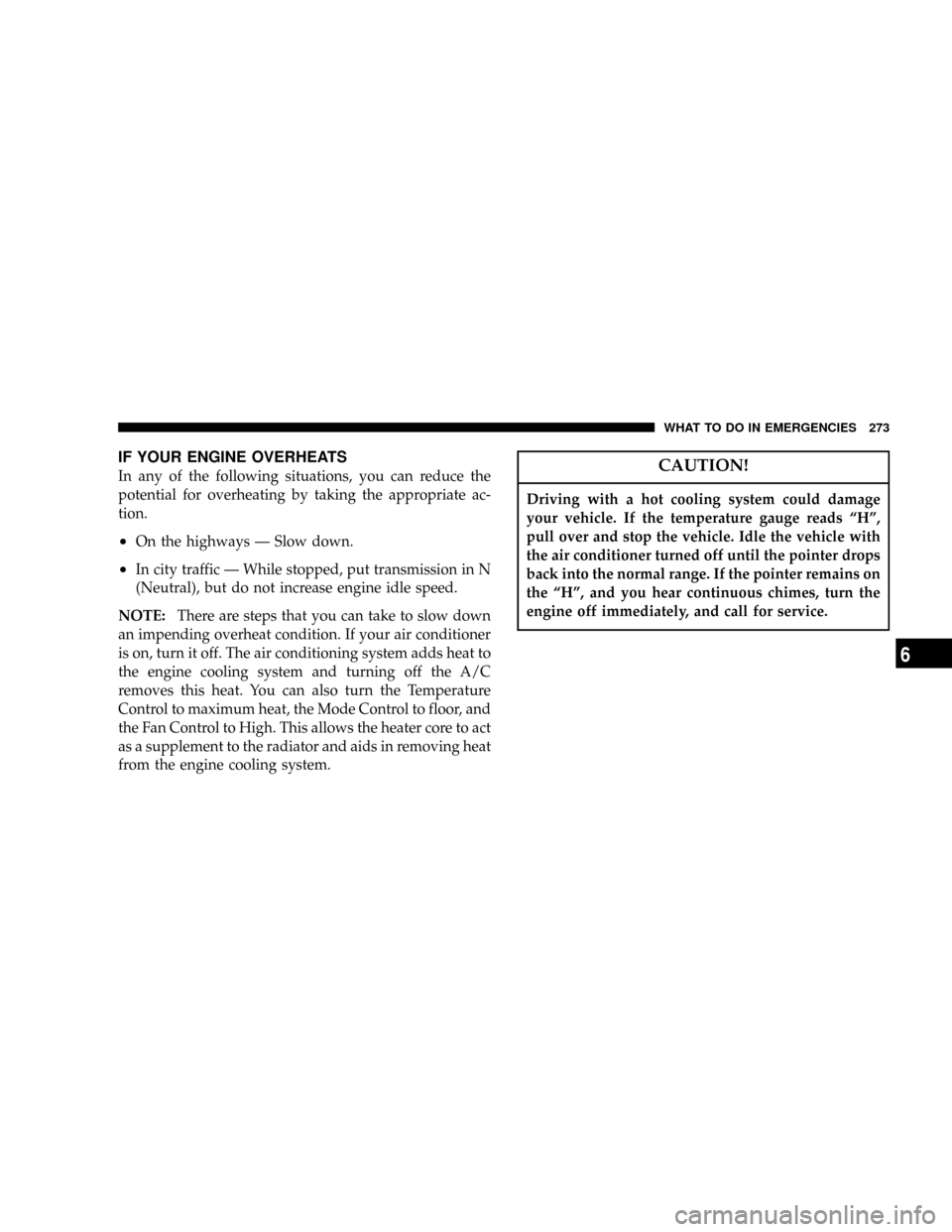Page 147 of 374

mSatellite Radio Ð If Equipped..............190
NSystem Activation.....................190
NElectronic Serial Number/Sirius Identification
Number (ENS/SID)....................190
NSelecting Satellite Mode In RBB And RBK
Radios.............................191
NSelecting Satellite Mode In RBP, RBU, RAZ,
And RBQ Radios.....................191
NSelecting a Channel....................192
NStoring And Selecting Pre-Set Channels......192
NUsing The PTY (Program Type) Button
(If Equipped)........................192
NPTY Button9Scan9.....................193
NPTY Button9Seek9.....................193NSatellite Antenna......................193
NReception Quality.....................193
mRemote Sound System Controls Ð If Equipped . . 194
NRadio Operation......................195
NTape Player.........................195
NCD Player Ð Single Disc In Radio.........195
NCD Player Ð 6 Disc In Cargo Area.........196
mCassette Tape And Player Maintenance.......196
mCD/DVD Disc Maintenance...............197
mRadio Operation And Cellular Phones........198
mClimate Controls.......................198
NHeater.............................198
NAir Conditioning.....................200
UNDERSTANDING YOUR INSTRUMENT PANEL 147
4
Page 198 of 374
RADIO OPERATION AND CELLULAR PHONES
Under certain conditions, the cellular phone being On in
your vehicle can cause erratic or noisy performance from
your radio. This condition may be lessened or eliminated
by relocating the cellular phone antenna. This condition
is not harmful to the radio. If your radio performance
does not satisfactorily ªclearº by the repositioning of the
antenna, it is recommended that the radio volume be
turned down or off during cellular phone operation.
CLIMATE CONTROLS
The controls for the heating, air conditioning, and venti-
lation system in this vehicle consist of a series of rotary
knobs. These comfort controls can be set to obtain desired
interior conditions.
Heater
Blower Control
The rotary knob on the left controls the blower and can be
set in one of four positions from Low to High.
198 UNDERSTANDING YOUR INSTRUMENT PANEL
Page 207 of 374
STARTING AND OPERATING
CONTENTS
mStarting Procedures.....................210
NManual Transmission..................210
NAutomatic Transmission................210
NNormal Starting......................210
NExtreme Cold Weather..................211
NIf Engine Fails To Start.................211
NAfter Starting........................212
mEngine Block Heater Ð If Equipped.........212
mTransmission Shifting....................213N5-Speed Manual Overdrive Transmission.....213
NAutomatic Transmission................216
mFour-Wheel Drive Operation...............222
NCommand-TractOperating
Information/Precautions................222
NShift Positions........................224
NShifting Procedure....................225
NSelec-TractOperating Information/Precautions Ð
If Equipped.........................226
NShift Positions........................229
5
Page 211 of 374
WARNING!
Never pour fuel or other flammable liquids into the
throttle body air inlet opening in an attempt to start
the vehicle. This could result in a flash fire causing
serious personal injury.
Extreme Cold Weather
To insure reliable starting at temperatures below ±20ÉF
(±29ÉC), use of an externally powered electric engine
block heater (available from your dealer) is recom-
mended.
If Engine Fails to Start
If the engine fails to start after you have followed the
ªNormal Startingº or ªExtreme Cold Weatherº proce-
dures, it may be flooded. Push the accelerator pedal all
the way to the floor and hold it there while cranking the
engine. This should clear any excess fuel in case the
engine is flooded.
CAUTION!
To prevent damage to the starter, do not crank the
engine for more than 15 seconds at a time. Wait 10 to
15 seconds before trying again.
STARTING AND OPERATING 211
5
Page 212 of 374

If the engine has been flooded, it may start to run, but not
have enough power to continue running when the key is
released. If this occurs, continue cranking with the accel-
erator pedal pushed all the way to the floor. Release the
accelerator pedal and the key once the engine is running
smoothly.
If the engine shows no sign of starting after two 15
second periods of cranking with the accelerator pedal
held to the floor, the ªNormal Startingº or ªExtreme Cold
Weatherº procedures should be repeated.
WARNING!
Never pour fuel or other flammable liquids into the
throttle body air inlet opening in an attempt to start
the vehicle. This could result in a flash fire causing
serious personal injury.
After Starting
The idle speed will automatically decrease as the engine
warms up.
CAUTION!
Long periods of engine idling, especially at high
engine speeds can cause excessive exhaust tempera-
tures which can damage your vehicle. Do not leave
your vehicle unattended with the engine running.
ENGINE BLOCK HEATER Ð IF EQUIPPED
The engine block heater warms engine coolant and
permits quicker starts in cold weather. Connect the cord
to a standard 110-115 volt AC electrical outlet with a
grounded, three wire extension cord. The engine block
heater cord is found under the hood clipped to the heater
line on the left side of the engine (3.7L only).
212 STARTING AND OPERATING
Page 213 of 374
WARNING!
Remember to disconnect the cord before driving.
Damage to the 110-115 volt AC electrical cord could
cause electrocution.
Use the heater when temperatures below 0ÉF (-18ÉC) are
expected to last for several days.
TRANSMISSION SHIFTING
5-Speed Manual Overdrive Transmission
Follow the shift pattern on the gearshift knob.
NOTE:The backup lights will come on when your
vehicle is in R (Reverse) gear and the ignition is in the ON
position.WARNING!
When parking your vehicle, always leave a manual
transmission in first gear and apply the parking
brake fully to guard against vehicle movement and
possible injury or damage. Never use any gear as a
substitute for the parking brake.
STARTING AND OPERATING 213
5
Page 273 of 374

IF YOUR ENGINE OVERHEATS
In any of the following situations, you can reduce the
potential for overheating by taking the appropriate ac-
tion.
²On the highways Ð Slow down.
²In city traffic Ð While stopped, put transmission in N
(Neutral), but do not increase engine idle speed.
NOTE:There are steps that you can take to slow down
an impending overheat condition. If your air conditioner
is on, turn it off. The air conditioning system adds heat to
the engine cooling system and turning off the A/C
removes this heat. You can also turn the Temperature
Control to maximum heat, the Mode Control to floor, and
the Fan Control to High. This allows the heater core to act
as a supplement to the radiator and aids in removing heat
from the engine cooling system.
CAUTION!
Driving with a hot cooling system could damage
your vehicle. If the temperature gauge reads ªHº,
pull over and stop the vehicle. Idle the vehicle with
the air conditioner turned off until the pointer drops
back into the normal range. If the pointer remains on
the ªHº, and you hear continuous chimes, turn the
engine off immediately, and call for service.
WHAT TO DO IN EMERGENCIES 273
6
Page 279 of 374

²Do not let passengers sit in the vehicle when it is on a
jack.
²Do not get under the vehicle when it is on a jack.
²Failure to follow the ªTire Changing Procedureº may
result in personal injury or damage to your vehicle.
²Only use the jack in the positions indicated.
JUMP STARTING PROCEDURE
NOTE:Check the charge indicator on the battery. If the
indicator is light or yellow, replace the battery.
1. Wear eye protection and remove any metal jewelry
such as watch bands or bracelets that might make an
unintended electrical contact.
2. When boost is provided by a battery in another
vehicle, park that vehicle within booster cable reach but
without letting the vehicles touch. Set the parking brake,place the automatic transmission in P (Park), or manual
transmission in N (Neutral), and turn the ignition to OFF
for both vehicles.
3. Turn off the heater, radio and all unnecessary electrical
loads.
4. Connect one end of a jumper cable to the positive
terminal of the discharged battery. Connect the other end
of the same cable to the positive terminal of the booster
battery.
5. Connect the other cable, first to the negative terminal
of the booster battery and then connect the other end to
a non-paint metal surface on the engine of the vehicle
with the discharged battery. Make sure you have a good
contact on the engine.
6. Start the engine in the vehicle which has the booster
battery, let the engine idle a few minutes, then start the
engine in the vehicle with the discharged battery.
WHAT TO DO IN EMERGENCIES 279
6